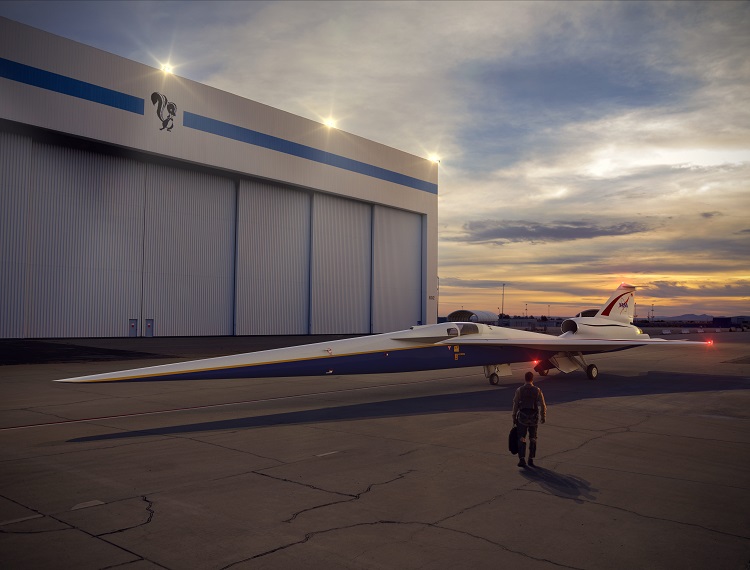NASA has officially committed to a three-year development timeline that will lead to the first flight of its X-59 Quiet Supersonic Technology (QueSST) aircraft.
This critical milestone comes after a rigorous review, called “Key Decision Point-C (KDP-C),” that confirmed NASA’s continued support of the X-59 in terms of funding. It establishes an achievable development timeline for NASA’s first piloted full-size X-plane in more than three decades.
“This aircraft has the potential to transform aviation in the United States and around the world by making faster-than-sound air travel over land possible for everyone,” said NASA Administrator Jim Bridenstine.

“We can’t wait to see this bird fly!” added Bridenstine.
KDP-C commits NASA to the full X-59 development effort through flight-testing in 2021. The cost and schedule commitments outlined in KDP-C align the project with program management best practices that account for potential technical risks and budgetary uncertainty beyond the project’s control.
“This is a monumental milestone for the project,” said Jaiwon Shin, NASA’s associate administrator for aeronautics. “I’m extremely proud of the team for its hard work getting to this point, and we all look forward to watching this aircraft take shape and then take flight.”
The X-59 QueSST is shaped to reduce the loudness of a sonic boom to that of a gentle thump, if it’s heard at all. The supersonic aircraft will be flown above select U.S. communities to measure public perception of the noise – data that will help regulators establish new rules for commercial supersonic air travel over land.
Earlier this month, NASA conducted test flights in Galveston, Texas, with a modified McDonnell Douglas F/A-18 supersonic research aircraft in a unique maneuver intended to produce a quieter “thump.” NASA surveyed volunteers from Galveston to determine how audible the supersonic thumps were in order to better understand successful data collection methods for the X-59.
Article source: SAE.ORG
